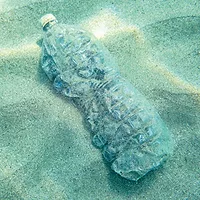The Most Overlooked Source of Contamination in the Food Chain?

Plastic cutting boards all have one thing in common: After repeated use, they become difficult to clean and, some would argue, impossible to sanitize. Even the Food Code acknowledges this in Section 4-501.12 Cutting Surfaces: Cutting surfaces such as cutting boards and blocks that become scratched and scored may be difficult to clean and sanitize. As a result, pathogenic microorganisms transmissible through food may build up or accumulate. These microorganisms may be transferred to foods that are prepared on such surfaces.
Most food industry professionals realize that just one foodborne illness can dramatically impact the viability of their business and livelihood. They follow Food Code guidelines, develop sophisticated food safety plans, establish checks and balances at Critical Control Points and welcome inspections to validate their successes and learn from their shortcomings. But what do you do when one highly visible, primary food contact surface is always out of compliance? Unfortunately, the answer seems to be “not much.”
Below, important issues are raised regarding the use and misuse of plastic cutting boards in the food processing and foodservice industries. Unfortunately, there are not many definitive solutions or alternatives available. The following problems are associated with plastic cutting boards:
• Plastic scores easily when cut on with a sharp knife, creating the perfect environment for microorganisms.
• Sanitizers are ineffective down in the microgrooves where bacteria, viruses and other microorganisms have a perfect environment to thrive.
• Over time, plastic starts to slough off, leaving a trough of missing plastic.
Let’s explore these problems in greater detail.
If you look closely at any used plastic cutting board, you will notice two things: It is stained and missing material. The process of cutting your board into tiny pieces is inevitable and begins immediately whether you are slicing, chopping, rocking or just sliding the cut foods into a bowl or pan.
Although all the plastic cutting boards sold in the U.S. are certified by the National Sanitation Foundation and approved by the U.S. Food and Drug Administration, they are not all created equal. Many boards are made of either polypropylene or soft injection-molded polyethylene. This material is very soft, scores easily and begins to enter the food chain immediately. As such, it should not be used in high-volume commercial food preparation. To make matters worse, this material cannot be resurfaced and ends up in the local landfill.
The best commercially available plastic is extruded, food-grade high-density polyethylene (HDPE). It is the only type of cutting board material that is harder to score, more durable, resists warping during high temperature cleaning/sanitizing and can be resurfaced. But even this material has its flaws. Repeated cutting on even HDPE still leaves microgrooves and begins the process of material sloughing off into the food chain.
A sharp knife can create a groove that is approximately one micron wide at its deepest point. The knife edge can pick up and deposit microorganisms each time it cuts into the board. Unlike wood, which can self-seal and smother potentially harmful organisms, plastic does not seal itself. Once a cut is made, it stays open. As more and more cuts are made deeper and deeper, a labyrinth of pockets create the perfect environment for microorganisms to multiply and thrive. Sanitizers may achieve a 99.999 percent or 5-log reduction of microbes on the surface of the cutting board. But beneath the surface, at the bottom of the cut marks, the kill rate is probably closer to nil.
One of the most important characteristics of food contact surfaces is that they must be smooth. “Smooth” is defined in the Food Code as having a surface free of pits and inclusions with a cleanability equal to or exceeding that of (100 grit) number 3 stainless steel. However, within just a few short hours of use, a plastic cutting board is almost always out of compliance with the health code because it can no longer be considered “smooth.”
Just because plastic cutting boards are made of “food grade” material does not mean that we should be eating it. Plastic is a petroleum-based product. As such, it is made of chemicals not found in nature that humans were not meant to ingest. Couple that with the potential threat that harmful microorganisms, viruses and bacteria cause by hitching a ride into the food chain, and you have a recipe for foodborne illness.
Looking for quick answers on food safety topics?
Try Ask FSM, our new smart AI search tool.
Ask FSM →







